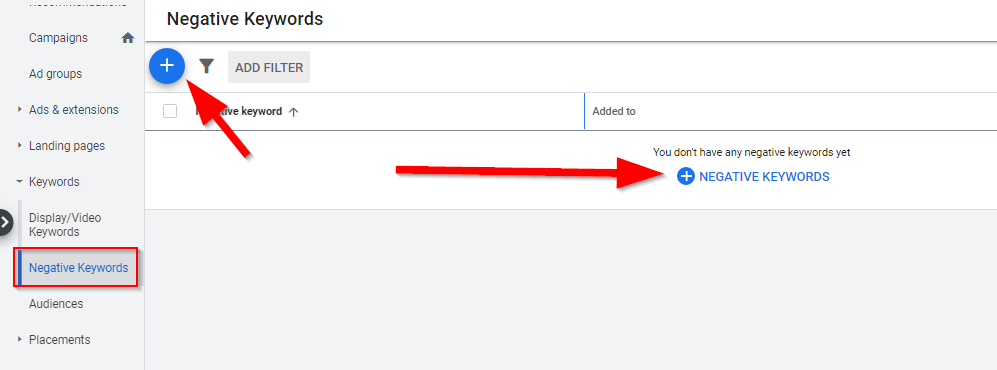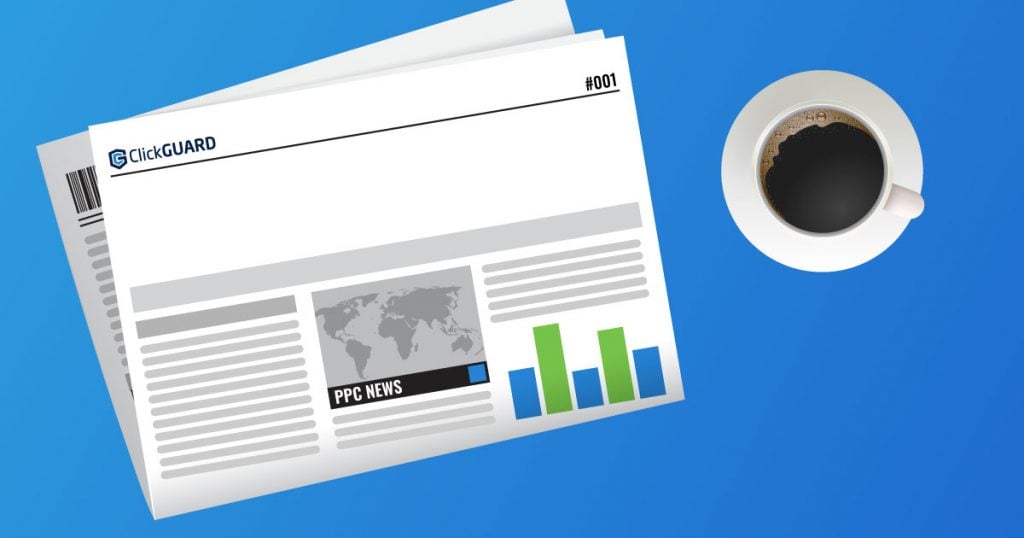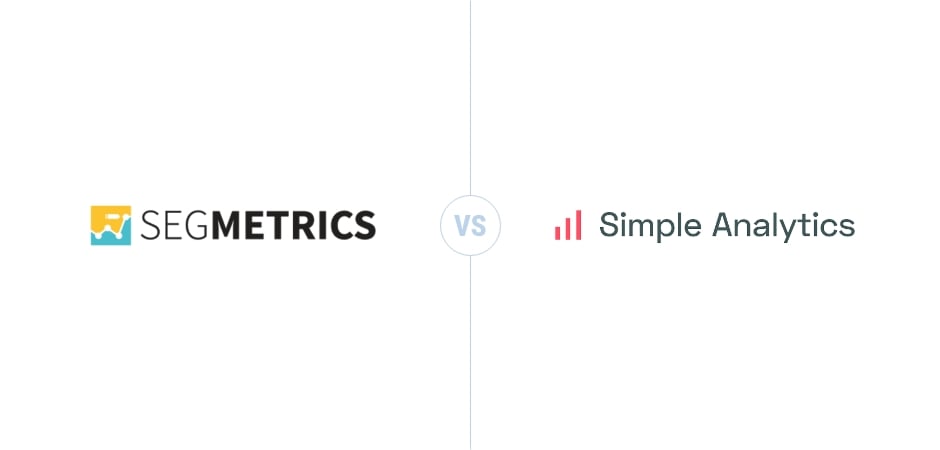Online advertising is a segment of every well-planned marketing strategy. It makes sense: paid campaigns can produce incredible results in terms of raising brand awareness, increasing the conversion rate and quality score of your business. Of course, “trade secrets” like using negative keywords and optimizing your ads for intent play a huge role in making sure your digital ads will actually yield the expected results.
Google advertising has been proven as a brilliant platform to promote your business and attract new customers, but to run a successful Google campaign and increase ROAS, implementing keywords is one step closer to achieving your ultimate goal.
However, marketers tend to neglect the usage of negative keywords that will keep your ad from being shown on irrelevant search results. That neglect can seriously harm the success of your paid advertising, cost too much money, and decrease your conversion rate.
What Are Negative Keywords in Google Ads?
Google Ads negative keywords are used to keep your ads specifically directed to your target audience and prevent them from showing as results to search queries irrelevant to your services/products.
Using good negative keywords will allow your business to reach the best potential audience whilst efficiently spending your campaign budget and avoiding wasting money on clicks that just won’t convert.
Your obvious goal should be to ultimately maximize CTR and conversions. With that being said, people who are looking for something you are not offering should be excluded from your website’s traffic since they are less likely to end up as your customers – and that’s precisely where negative keywords come into play. It’s all about saving clicks.
Using negative keywords will also impact your account’s click-through rate and ensure that your ads are being displayed when all search parameters are aligned with your website’s scope. It’s also worth mentioning their positive influence on the RIO of your advertising.
The key to success with paid campaigns is knowing exactly who you are targeting – and who you have to exclude from your target list.

Negative Keywords Match Types
Gaining a deep understanding of negative keyword match types is a “fundamental” process to follow before assigning them to a specific google campaign. Depending on what you find the best solution for your keyword you can use either broad, phrase or exact match type. If used correctly, all three groups of match types can significantly determine the ultimate success of your ads.
Broad Match
Broad match negative keywords can sufficiently limit your reach since they allow you to prevent your ads from showing for searches that include every word of your keyword phrase, no matter the order.
Here is an example.
If you set your negative keyword as “winter jackets”, the broad match will exclude your ads from showing as a result of similar phrases like “black winter jackets”, “jackets winter” or the actual phrase, “winter jackets”. However, your ad can still be displayed to search queries like “ski black jacket”.
When it comes to broad match, we would advise you to be careful and do your research, since they can significantly restrict your reach. Keep in mind that broad match negative keywords will exclude any related query or subject that has something in common.
Phrase Match
Phrase match will explicitly exclude quotes or phrases you have assigned within the process of adding negative keywords and keep your ads safe from that specific topic. We would like to emphasize that this match type is probably the safest option if you are afraid to hide your ad from a wider audience but you still want to narrow down targeted search queries.
Here is an example. If you add “Italian restaurant” as a negative keyword, your ad will not be shown for “Italian restaurant near me” or “Best Italian restaurant in the city”. However, your ad could be displayed for queries like “Pasta places near me”.
Exact Match
As the name suggests, the exact match negative keyword will only exclude your ad from search queries that exactly match the phrase you provided as a negative keyword – every other variation will still be available.
For example, if your negative exact match keyword is “Mystery books”, your ads will be shown for any other variation of the provided keyword, even if the user only switches word positioning, such as “books mystery”.
With a bigger budget, you will also have more freedom to specify each exact match negative keyword since they are the most specific match types of all. But, if you are aiming to save the budget but still narrow down your target audience, then instead, go with broad or phrase match type since both of them will exclude your ad from showing to wrong queries.
How To Add Negative Keywords
The best time to add negative keywords is before you launch a campaign. This means you should address the campaign- and ad group-level negative keywords, as well as the negative keywords’ match type before it starts showing. That being said, you should constantly be on the lookout for new irrelevant keywords to add to the list. Keep your eyes peeled and watch those search terms reports carefully.
Correctly identifying negative keywords is crucial for their proper application as you can look out for them in several different ways. Manual google searches, the process of keyword research, term report analysis research, are only some of the paths you can take when identifying the best negative keywords for your campaign.
Once crucial negative words are determined the following step is organizing and arranging them in separate groups, whether they are generic negative keywords, wrong business direction, competitors, etc. It’s up to you to decide which way you will be organizing your negative keywords and what groups you will add.
Adding negative keywords to your Google Ads account is a simple process that, if you have identified your negative keywords earlier, will only take you a few minutes of your time.
1. Open your Google Ads account and choose the “Keywords” section on the left sidebar:

2. Under the “Keywords” section, locate the “Negative Keywords” panel and click the blue “+” button that will allow you to add negative keywords to a list of either a campaign or ad group level. Keep in mind, when adding a specific keyword, make sure to apply the correct format, which depends on the keyword match type. Example: [exact match], “phrase match” or broad match.

3. After you finish, you will be able to overview the list of all negative keywords you added, remove some of them if necessary, or add more.

Why You Should Use Negative Keywords in Your Ads
A good negative keywords list has several positive benefits for your ad campaign or group of ads. The most obvious benefit is that negative keywords restrict the irrelevant traffic coming from your ads. People who are looking for something you’re not offering are less likely to appear on your website or online store if you exclude them with negative keywords.
Understanding negative keywords is like catching money.
When you prevent your ad from showing as a result of irrelevant searches, you will save more clicks that could potentially be wasted on non-profitable users, and with saving clicks – you are saving money. Excluding some keywords that could be misleading Google and users will push your advertising in the right direction and deliver you much greater outcomes and rates.
Improve the relevance of your ad groups
Refining and excluding unassociated keywords will make your ad groups more focused and limited to the specific target audience that has a greater potential of becoming your next customer. Limiting ad groups to smaller segments will provide you with an opportunity to create better-related messages that will speak to the audience you want to attract to your website.
Increase conversion rate
Using negative keywords and keeping your ads away from unconnected and irrelevant search queries will cause your advertising to reach the ultimate audience whose problems could be solved with your products/services. With that being said, negative keywords will attract users that are more likely to become your customers and increase the conversion rate. Your ad can be clicked by thousands of users which will affect the number of website visits, but limiting and focusing ads on users who need your products will significantly increase the conversion rate.
Improve Click Through Rate (CTR)
By preventing your ads from showing up on unrelated searches, you will narrow down the target audience and the percentage of users that will click on your ad will increase. This also has a great impact on increasing the conversion rate and quality score you achieve on your website.
Improve ROAS (Return On Ad Spend)
Adding Negative Keywords will also impact ROAS, when you limit your ads to reach the real interested users, there is a greater chance for them to end up buying your product/service and give back the money you have spent on advertising. Budget is a concern for every business, so invest smart and think long-term.
Save your business money
When you improve the relevance of your ad groups, increase conversion rate, improve CTR and ROAS, the obvious outcome you gain is saved money. Instead of investing in numerous Google ads that come out as useless clicks of uninterested people, you can apply negative keywords and start saving money. Your ads will not be wasted on random clicks, you will get your money back throughout the conversions, and you will earn more money to start advertising again. Win-win situation.
Frequently Asked Questions about Google Ads Negative Keywords
When should I add negative keywords to my Google Ads campaigns and account?
As mentioned above, the best time to add negative keywords is before you launch a campaign. This scenario is proven to be the most proactive one, and brainstorming and identifying negative keywords should be mandatory just like regular keyword research. With this approach, you can save money on wasted clicks and prevent the damaging influence they could have on your Quality Score.
You can also add negative keywords once a campaign is live – this solution is proven to be useful as well since it comes as a response to unrelated search queries that your ad has already been displayed on. If your ad results in high impressions and low clicks, something is not right so adding negative keywords while the ad is up and running will also give positive results.
Does Google automatically exclude misspellings and close variants keywords?
Inflected forms of negative keywords and compound words containing them will not be excluded. This means that you’ll have to manually add word forms like plurals, but also misspellings and synonyms.
Is it better to look for negative keywords before or after a campaign starts?
The best time to search for negative keywords is while doing keyword research. It makes perfect sense to look for negative keywords while you’re looking for the keywords you want to target. However, it’s mandatory to keep monitoring both positive and negative keywords, in case some of them end up as misleading or they keep hiding your website from the right audience.
Is it possible to bulk upload negative keywords?
The best way to upload your list of negative keywords is via the Google Ads Editor app. It’s much easier to manipulate the keywords in the Editor app than in the Google Ads’ interface.
Here is the quick tutorial:
- Create a list of negative keywords categorized by Campaigns and Ad Groups. Copy your data.
- In the Google Ads Editor navigate to Account > Import > Paste text.
- Paste from the clipboard and check if the data is OK.
- Process and Apply.
How many negative keywords should I add?
The best quantity of negative keywords to add is — a lot. Don’t be surprised if your negative keywords greatly outnumber your regular keywords. It’s not uncommon to have up to five times more negative keywords than regular ones. Identify the right match type and ensure that your ad is being hidden only from irrelevant searches.
Are negative keywords case sensitive?
Luckily, neither positive nor negative keywords are case-sensitive. Potential changes in capitalization do not affect the performance of the keywords or ads.
Can I have negative keywords and positive keywords in the same Google Ads Campaign?
A negative keyword always wins. Therefore please watch for keyword conflicts. It’s not inconceivable that you’ll add a negative keyword that conflicts with a regular keyword you have. Your ad will not be triggered by the regular keyword, in that case, make sure you remove all conflicts. Validate and test using the Ad Preview and Diagnosis tool.
Conclusion
As shown above, negative keywords are more than essential for running a successful campaign and creating better results that can significantly impact your business. When starting with negative keywords for the first time, you might get a little bit lost – “Where do I even begin?” But, there’s no need to panic. Doing unique research for negative keywords ideas is a place to start and if you do your homework correctly, the rest comes like a prize. It is also mandatory to form a consistent keyword list for your ad campaigns. If a certain inconsistency in the use of negative keywords occurs, it may be a consequence of improper research or lack of time.
If you want to learn more about negative keywords you can definitely use our Google Ads Masterclass Course – it’s completely free and we guarantee that within 6 weeks you will be a true Google Ads expert! Check it out here!



